The Tales Series: Where to Start?
As one of the longest-running RPG franchises, the Tales series has had an amazing evolution over the years. When Tales of Phantasia released in Japan in 1995, no one knew it would become as influential as it has, and enjoy longstanding growth for over 27 years. As of 2022, the mothership series has spanned seventeen games that have constantly kept it fresh, while a number of spin-offs and mobile titles — generally designated as “escort” games — have given fans plenty of additional content to enjoy. On top of the game releases, there have been anime, manga, and CD dramas, as well as frequent character polls to keep the franchise well within the public eye.
The Tales series has a few distinct trappings that keep people coming back. By and large, every game features a delightful cast of characters and villains, characters have great chemistry, and action combat slaps. While not every game is equal in these elements, they are the core of what gives the Tales series so much impact. The base Linear Motion Battle System (LMBS) transforms with each game, and over the years there’s certainly been some unique experimentation. The core themes the series likes to explore include coexistence between different races, parallel worlds, racism, and even classism. Although high fantasy has been the primary backdrop for many of the games, the series has created numerous worlds and considered technological advances to allow the writers to truly explore these themes to their fullest.
This beloved series has so much to offer RPG fans and, given its legacy, there are so many unique starting points for newcomers who may be interested in exploring the franchise further. For this guide, we will be exploring the mothership titles in order of release. Eagle-eyed fans will notice that one Japan-only mothership title has been dropped, and we have snuck what is technically an escort in there, but we also dive into some of the interesting Japan-only releases. We hope you enjoy the history lesson and invite you to provide your own thoughts in the comments.
By Sam Wachter, Alex Fuller, Jon Jansen, Ryan Radcliff, Paul Shkreli, Cassandra Ramos, Kelley Ryan, and Robert Albright
Tales of Phantasia
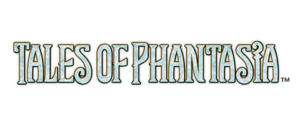
Available on: Game Boy Advance
Japan-only: Super Famicom, PlayStation, PlayStation Portable, iOS
It took eleven years for the west to finally be able to officially play the first title in the series. Originally released for Super Famicom in Japan in 1995 and then PlayStation in 1998, it wasn’t until 2006 and the Game Boy Advance version that Tales of Phantasia finally hit North America and Europe.
While in many series the first titles have ended up feeling different from their subsequent entries, Tales of Phantasia feels fundamentally “Tales“. The series’ penchant for experimenting with narrative tropes is quickly established. What seems like a straightforward premise about a nefarious knight unsealing the evil sorcerer Dhaos swiftly becomes much more complicated as the party ends up dealing with events across multiple time periods and learns that Dhaos’ motivations are not all they seem to be.
Tales of Phantasia also firmly establishes the series’ action combat. While it has been steadily built upon and now fully extended into 3D, the side-scrolling Linear Motion Battle System set the template for the vast majority of games following. The idea of players directly controlling one character and looking to build combos through a mixture of regular attacks and special abilities has pervaded and been the element that readily identifies Tales games.
Though an iOS version was released internationally in 2014, it was pulled later that year, making the Game Boy Advance version the only official English release available. Japanese readers at least have a few other options, with a PSP version also released in the country. But it’s a strong start that still holds up well and those who are able to get a hold of it will be able to readily see the series’ foundations come to life. The game did get a semi-distant sequel featuring a new party of characters, Tales of Phantasia: Narikiri Dungeon, though this was only released in Japan for Game Boy Color and later PlayStation Portable.
Tales of Destiny
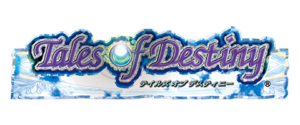
Available on: PlayStation
Japan-only: PlayStation 2 (Director’s Cut)
The second game in the series but the first to be released in North America, Tales of Destiny was the series introduction for many. Originally releasing on PlayStation in 1997 in Japan before heading to North America a year later, it also received a PS2 release in Japan, while Europe sadly missed out entirely.
Boasting a large set of characters, and more mini-games than you’ll ever remember, Tales of Destiny has the bones of a Super Nintendo game but is very proud to be a PlayStation title. It is only a slight upgrade, graphically, from Tales of Phantasia, for the Super Nintendo, and the battle system is nearly identical. While the combat is serviceable, pretty much retaining the same system as Phantasia, it is basic and can devolve into button mashing, especially when compared to later entries in the system.
The storyline is a bit of a mess and has players controlling Stahn Aileron, a country bumpkin with dreams of adventure, who sneaks onto the Draconis, an airship. He is quickly discovered but is freed when monsters attack the ship. Looking for something to fight them off with, Stahn discovers a sentient sword named Dymlos, a relic from an ancient war. This meeting puts Stahn on a course to meet the other sword wielders on a hunt for another ancient relic with the power to cause mass destruction. The story is classic Tales, and all over the place, with enough plot twists and turns to keep the ride entertaining.
The true highlight of the game is the soundtrack by Motoi Sakuraba. Particular highlights include the main battle theme, overworld theme, and any song involving a snowy location. The game contains some of his most distinct and memorable arrangements. There are a few other incredible moody dungeon pieces as well. For players used to modern bells and whistles, Tales of Destiny may be a tough sell as their first foray into the entire series. However, it’s a great indicator of where the series comes from.
Tales of Eternia
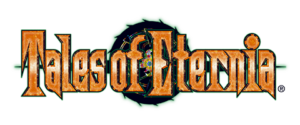
Available on: PlayStation, PlayStation Portable (PAL)
Tales of Eternia confuses things slightly, though through no fault of its own. In North America, it was dubbed Tales of Destiny II, as it was the second English Tales release following Tales of Destiny. If that wasn’t enough, Japan then received an actual sequel to Tales of Destiny under the title Tales of Destiny 2. Eternia has nothing to do with Destiny, as like most entries in the series the game focuses on a new world and a different cast of characters. Originally releasing on PlayStation, Tales of Eternia didn’t reach PAL regions until its PlayStation Portable remake, which also released in Japan but didn’t make it to North America. Got all that?
Tales of Eternia is set in the world of Inferia, following Reid, a young hunter who meets a mysterious girl named Meredy, who speaks a foreign language. Their meeting sets them on a journey to figure out the girl’s origins, and the party becomes involved in other-dimensional conflicts in a different world called Celestia. The story of Eternia is simple, straightforward, and mostly fluff. Although it has an adorable cast of characters, its narrative tends to be fairly standard and forgettable.
Eternia’s iteration of the Linear Motion Battle System is simple, without any real bells or whistles to make it unique. That being said, simplicity is Eternia’s strongest suit. Not only sporting a lovely soundtrack from series mainstay Motoi Sakuraba, it also offers adorable sprite work throughout, making for a pleasant-looking presentation overall.
Starting with Tales of Eternia is not a bad choice if one wants to come in with the series’ earlier entries, though it’s a difficult game to track down. The original PSX release will easily run you hundreds of dollars, while the PSP version’s price doesn’t fare much better. While it’s a charming and sweet game in its own right, the price point is likely what is keeping many players from experiencing it.
Tales of Destiny 2
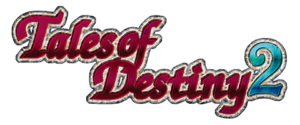
Japan-only: PlayStation 2, PlayStation Portable
Tales of Destiny 2 is the earliest mothership Tales game has never received a western release. One of the rare direct sequels to be given full mothership status, the game follows Kyle Dunamis, the son of Tales of Destiny’s Stahn Aileron, and takes place eighteen years after the events of its predecessor.
Kyle sets out on a journey to gain funds to save the orphanage he lives at, run by returning character Rutee. He comes across a girl called Reala, who claims to be looking for a hero, and Kyle jumps at the opportunity to emulate his parents. Kyle soon also becomes embroiled in Barbatos Goetia’s attempts to kill those who accompanied his father during his heroics, while the Order of Atamoni uses Lens relics to try and cement control over the world. The game’s story was largely positively received in Japan as being relatable and making good use of time-travel elements — although the series had already done time-travel with Phantasia — but was noted as being better suited for those who had played Tales of Destiny than newcomers.
Tales of Destiny 2 introduces Spirit Points to the combat system, which are largely there to restrict the button-mashing of previous titles and make things more tactical. As players defend or avoid enemies, they regain Spirit Points, which in turn increases their combat capabilities. The game also introduces the series’ Grade system for the first time, which gives players a score for each battle, as well as what effectively becomes an auto-battle system. Given its import-only status and that having played Tales of Destiny is a significant factor in enjoying certain story elements, Tales of Destiny 2 certainly isn’t the place for western RPGamers to start the series, though some may be interested to see the gameplay elements it introduced.
Tales of Symphonia
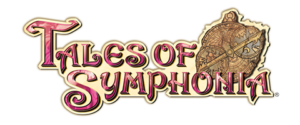
Available on: Nintendo GameCube, PlayStation 3, PC
Japan-only: PlayStation 2
(Coming soon to PlayStation 4, Xbox One, Nintendo Switch)
Tales of Symphonia is an easy recommendation to series newcomers. After Tales of Destiny and Tales of Eternia for the PlayStation, Symphonia was the next game to be localized in America. When it released in 2003, it was a relief for RPG-thirsty GameCube owners. Since then it has been ported to the PlayStation 3 and PC in a bundle containing its Wii sequel, Dawn of the New World. More recently it was ported to Steam, making the game readily available on a number of platforms for those curious about the series.
The first title to use 3D character models throughout, Tales of Symphonia is a sampler platter of the best parts of the Tales series. The storyline involves a group of teenagers — plus a few adult chaperones — on a quest to restore their world of Sylvarant’s mana and free its populace from their Desian overlords. However, things are soon revealed to be much more complicated than that. While the story goes into strange places in the last act in true Tales fashion, it succeeds in maintaining a zesty energy as these children grapple with what is revealed to be an unpleasant fate. Symphonia isn’t afraid to wander into heavy subjects including slavery and racism; it succeeds in balancing the drama with levity from its well-rounded and engaging core cast of characters, whose shared experiences makes them feel like a family.
Symphonia also represented an evolution in the series, with a superior graphical presentation than earlier entries that has held up remarkably well over the years. The soundtrack is engaging and memorable, while the bright color palette serves the graphical style well. The battle system is similarly enjoyable without being overwhelming and offers a surprisingly intuitive mix of 2D combat and 3D movement, complemented by the innovative EX Gem system that governs how character abilities are developed.
Symphonia success led to spawn a direct sequel, a rarity in the series. The story of Lloyd and company is heartfelt, moving, and engrossing. Nearly 20 years later, and readily available thanks to its Steam release, Tales of Symphonia is certainly a great place to start as it not only sets the baseline for most of the franchise’s modern entries, and remains an incredibly engaging title.
Tales of Rebirth

Japan-only: PlayStation 2, PlayStation Portable
Tales of Rebirth is the sixth entry in the series and is one of the first to appear on the PlayStation 2, with the previous titles coming to console later through ports and remakes. Unfortunately, Rebirth did not get an official English release, which is a right shame given the amount of praise the game has received from Japanese audiences and importers alike.
Rebirth’s story focuses on humans and beasts living in coexistence, though in ancient times this was certainly not the case. The world is inhabited by a power known as the Force (not that one), which can manifest in different users in unusual ways. The story begins with the hero, Veigue Lungberg, wielding the Force of Ice, which goes out of control and accidentally imprisons his friend, Claire, in a pillar of ice. Claire is then kidnapped by a group called the Agarte, who are in search of the most beautiful human in the world. Veigue meets some interesting companions along the way to rescue Claire, while the Agarte summon Geyorkias, a spirit intent of destroying all humans. The story also has themes of body-switching, racism, and the issue of coexistence between different races, which make for interesting story beats.
There’s a lot that Rebirth has going for it. Visually, it offers decent 3D-rendered backgrounds and character models, while in combat characters are 2D moving on 3D backgrounds and able to move across three different lines on the battlefield, dubbed the Three-Line LMBS. Characters can also activate a rush gauge to lay harder into enemies, at the cost of lowered defense.
Being a Japanese-only PlayStation 2 title, with a later PSP version also only released in Japan, playing Tales of Rebirth is rather tricky. The PSP is at least region-free, but the PS2 is not, meaning obtaining that version requires a model that can play Japanese titles. Obviously, it’s not a sensible place to start for non-Japanese speakers and is one best left for those who have a lot of patience or high proficiency in Japanese to enjoy.
Tales of Legendia

Available on: PlayStation 2
Tales of Legendia is often regarded as the black sheep of the series. Developed by members of the Tales Studio and members of Namco’s fighting game division, Legendia’s gameplay is unique for the series. Everything in the game is presented in a side-scrolling manner, with combat feeling even closer to a fighting game than normal, as characters can engage with enemies in real-time. Since it resembles a fighting game, characters can only move forward, backward, or jump straight into the air. The regular Artes are replaced by Eres, though these also cost TP and allow for combo-breaking action. Many of the complaints Legendia often receives are due to how limiting the combat system feels, as well as how rough the random encounter rate is. There’s definitely stiffness in the combat system, and while borrowing from the fighting genre is an interesting take, the execution is fairly lackluster.
Legendia is not a wholly bad game, as it has a great cast of loveable characters, and it’s one of the few games in the series that offers an additional scenario when the main game has been completed. It also has an outstanding soundtrack composed by Go Shiina, which doesn’t get enough credit. Legendia’s story mainly focuses on fulfilling one’s destiny, and trying to appease two very different groups of people in a world surrounded by water that is literally drowning. It’s a neat concept that has a great visual impact throughout the game.
Tales of Legendia is the awkward teenager of the Tales series. It takes a ton of different risks in its gameplay, though it’s hard to say that they pay off. Legendia has some that love it for being an awkward mess, it’s a game where players can see the kinds of mistakes that were made, and how they were remedied in Tales of the Abyss, the following PlayStation 2 release. Tales of Legendia has some appeal for those with curiosity about how the series has evolved over the years, but it’s a horrible starting place given how much it changes the trappings that the series is known for.
Tales of the Abyss

Available on: PlayStation 2, Nintendo 3DS
The series’ tenth-anniversary title, Tales of the Abyss originally came to PlayStation 2 in Japan in 2005, with North America receiving it a year later. Europe, however, had to wait until the Nintendo 3DS port put the game in a very welcome handheld format in 2011.
Tales of the Abyss is notable for having one of the series’ finest examples of protagonist character growth. The setting of Auldrant plays with the traditional elements of the series, where elementary particles called Fonons control the traditional Fire, Water, Wind, Earth, Light, and Darkness. However, a seventh Fonon is also present that controls Sound. Main protagonist Luke fon Fabre starts out as a self-centered noble, having been sheltered after returning from a kidnapping in which he lost his memories. However, when an encounter with Tear Grants transports them both far away, he finally needs to interact with the outside world and is soon forced to question his place in it.
Luke’s progression happens slowly, which makes for an interesting effect on the game. The early stages can feel a bit of a slog with Luke’s annoying attitude, and feel slightly haphazard in general, but there’s a great pay-off for them. Even when Luke is in his early, selfish stage, the game conveys his feelings very well, and his journey from a selfish and sheltered brat into the final hero of the game is plotted superbly. The other party members follow a similar pattern, albeit starting at different points, each undergoing their own defining moments and growth. While the narrative element is one of the most interesting in the series, on the gameplay side, Tales of the Abyss plays it fairly safe. Though movement in combat is slightly freer and plays a role with elemental zones that can boost certain attacks; there’s not much change over its previous entries.
This is another title where potential players are currently reliant on being able to find a disc or cart as the 3DS version, coming at the beginning of the system’s life cycle before digital games had taken off, is physical only. However, for those who are happy just witnessing the story and Luke’s character progression, it has one of the better game-to-anime adaptations out there with a full 26-episode series, which is available to watch for free on YouTube.
Tales of Symphonia: Dawn of the New World

Available on: Nintendo Wii, PlayStation 3
Tales of Symphonia: Dawn of the New World was originally released on the Nintendo Wii in 2008, with a HD port later released for the PS3 alongside Tales of Symphonia. Dawn of the New World takes place two years after the events of the first game, and although the world was saved, the land is plagued by sudden upheavals in climate. What’s more, the sudden merging of two groups of people has resulted in oppression, eventually leading to a massacre called the Blood Purge. This massacre was apparently led by Lloyd Irving, the main character of the first game. Emil Castagnier, the main protagonist of this game, saw Lloyd kill his parents and has hated him since. Six months later, he meets and befriends a girl named Marta Lualdi. He learns from Marta and her companion Tenebrae that the strange climate is due to the Summon Spirit of the former Giant Kharlan Tree, Ratatosk, having fallen asleep. Emil goes on a journey with Marta and Tenebrae to awaken the other Centurions so that Ratatosk can be revived and restore balance to the world.
Dawn of the New World is the one “escort” title that we’ve permitted to sneak into our main list, with its Chronicles bundle release with the original helping establish it as the highest profile one out there, especially for western fans. Unfortunately, its escort status does show in the game. Dawn of the New World lacks a traversable world map, Emil and Marta are the only new playable characters, many locations are reused from the first game, and other aspects are seemingly lacking.
Despite these shortcomings, Dawn of the New World still has a lot of heart and effort put into it. The battle system, a modified version of the one found in Tales of the Abyss and Tales of Vesperia, is easy to learn and quite enjoyable. The monster-capturing system is unique and quite fun, and the game is the first in the series with fully voiced skits. Indeed, the voice acting and localized script are excellent. This is despite most of the returning Symphonia characters being voiced by new English actors. The three characters players will hear the most of — Emil, Marta, and Tenebrae — are portrayed fantastically well by their actors, who really bring them to life. Indeed, the main trio is arguably the strongest aspect of the game. Emil undergoes a fantastically well-developed character arc, as does Marta, albeit to a lesser extent. Tenebrae is a static character, but his love of deadpan snark, bad puns, and trolling make him loveable and a great foil to the main duo and the other characters in the game. Emil and Marta also have a well-paced and endearing relationship that starts as almost a joke but arguably becomes the best romantic subplot in the series.
Being a direct sequel, Tales of Symphonia: Dawn of the New World is not the best game in the Tales series to start with. While the beginning of the game does tell a shortened version of the original Tales of Symphonia, many plot points are left out. The returning characters might also seem flat and weakly characterized to those who didn’t see their development in the first game. New players should be able to follow the story, but they won’t get as much out of it without playing the first game. Dawn of the New World is also sadly not available on any current-generation console, not even getting the PC port the original did. While it is considered one of the most divisive Tales games among fans, this game does have a lot to love. Anyone who has played Tales of Symphonia should at least give Dawn of the New World a try. It isn’t quite as good as its predecessor, but it is still a worthy follow-up.
Tales of Vesperia

Available on: Xbox 360, PlayStation 4, Nintendo Switch, PC
Japan-only: PlayStation 3
The Tales series made an extremely successful jump to 3D thanks to the success of Tales of Symphonia. However, when it comes to recommending a game to start with from this era, Tales of Vesperia comes up first in many people’s estimation. Despite its popularity among the fanbase, Vesperia’s western release status courted some consternation, as it was one of the games to arrive on Xbox 360 first during Microsoft’s ill-fated JRPG push. Japan saw a PS3 version that added more voice acting and a whole new playable character, but it wasn’t until 2019’s remaster that the extra content became playable in English.
Vesperia builds off its predecessors and refines its gameplay mechanics to the point where it still feels good to play now, even though the combat system is a bit outdated. Also, before Tales of Arise came out in 2021, Vesperia could also put in a strong claim to the title of the best-looking Tales game. Are its mechanics and graphics perfect? No. But when it comes to this era of 3D Tales games it’s certainly the best.
Of course, it can’t claim to be one of the best if it didn’t have an excellent cast of characters and story. Vesperia’s main protagonist Yuri Lowell is regarded by many as the best in the series, particularly thanks to his willingness to get his hands dirty for his beliefs. Add the great ensemble of characters around him and Vesperia has a delightful cast to get to know. Although the story’s third act isn’t as strong as the rest of the game, it doesn’t deter from Vesperia having a wonderful narrative as well. If you want to start in the golden era of Tales games, then Vesperia is the way to go, with the benefit of being one of the most accessible thanks to the Definitive Edition being readily playable on PC and all modern consoles.
Tales of Hearts (R)

Available on: PlayStation Vita
Japan-only: Nintendo DS, iOS
Tales of Hearts was one that looked set to remain a Japan-only title. Originally released for Nintendo DS in 2008 and then remade as Tales of Hearts R for PlayStation Vita in 2013, North America and Europe finally got the Vita release in 2014. Ultimately, it’s one of the more forgettable entries in the series that nonetheless has its moments and enjoyable gameplay.
The story has some interesting ideas. The game is set primarily in the world of Organica. In the past, parasitic creatures called Xerom fed on the Spiria (effectively the hearts and emotions) of the people, before weapons called Soma allowed users to physically enter someone’s Spiria to eliminate the Xerom within. Kor Meteor goes on a journey to restore Kohaku’s Spiria after it becomes shattered when she saves him from a sorceress. Things are made complicated as a new Xerom threat emerges while both the Empire and Church seek to find Kohaku’s Spiria core.
Unfortunately, the story never really shines like the gemstones most of its characters are named after. It’s one of the series’ least engaging and shallower casts and the pacing is frequently off. Hearts R’s localisation also has a few issues, largely stemming from the fact that it appears to have been created under the expectation of an English dub. No such dub materialised, which leads to striking oddities such as Kor being addressed by his Japanese name Shing throughout.
There are some significant differences between the DS and Vita versions, primarily on the gameplay and graphical side. The DS version features 2D sprite-based combat more akin to the earliest titles in the series, while the Vita remake features 3D environments and character models, but neither system ends up being hugely noteworthy within the series. Although it’s a perfectly decent game, it’s not the most engaging entry point in the series and newcomers are unlikely to find a shining diamond in the rough.
Tales of Graces (f)

Available on: PlayStation 3
Japan-only: Nintendo Wii
Tales of Graces was a title that originally did not get released outside Japan when it debuted on the Nintendo Wii in 2009. It was eventually ported to PlayStation 3 as Tales of Graces f with updated graphics, new gameplay mechanics, and additional scenarios to explore.
Graces f is broken up into three story arcs, with the child arc acting as the game’s tutorial. While skippable, missing this section is not recommended for first-time players. The adult arc is the main story and covers a majority of the game’s scenarios. The port also includes a Lineage and Legacies arc which adds an extra character and concludes some lingering storylines.
The game is filled with a colorful cast of characters whose chemistry really shines during all the skits, story segments, and victory scenes, even if their inability to spot someone acting distinctly out of character is highly suspect. However, the best aspect of this game is the battle system. The Linear Motion Battle System is the best in the series, with how quick, action-packed, and engaging it is to run around smacking enemies. Graces f remains one of the few games in the series where every single playable character is actually unique and fun to use in fights.
The one knock to the games is accessibility. Western audiences only have the option to play it on PlayStation 3 currently, and there is no sign of the game releasing on more recent consoles at present. Those interested in catching the apex of the series’ battle system should definitely go and give Tales of Graces f a try.
Tales of Xillia

Available on: PlayStation 3
The Tales series isn’t known for dual-perspective titles. In Tales of Xillia, players are introduced to the world of Rieze Maxia, a place where humans and spirits live together in harmony. Players take on the role of either Jude Mathas or Millia Maxwell, as they attempt to avoid the government after encountering a weapon of mass destruction. While it’s a novelty in the series that players can choose which protagonist they wish to follow, both Jude and Millia’s stories are far too similar to make this element a real selling point. It’s a shame too, given both of them are fun characters to interact with.
Xillia at least offers players a great cast of characters, from Rowen the murder butler to Leia, Jude’s childhood friend and trainee nurse (who appears to have a crush on the clueless Jude, as trope tradition dictates). The plot focuses on the power of spirits, stopping terrorism, and attempted world domination. This one has a bit of a darker tone storywise, though the characters are fantastic at cutting moments of tension with awkward commentary, as well as learning about bazongas.
Tales of Xillia’s Dual Raid Linear Motion Battle System has four characters who can be out on the field at once. Characters have limited dashing and Artes usage, with the number of actions they can take in succession restricted by the Assault Counter. In exchange, two characters can link together to perform Unite Attacks and Artes, with the supporting character in the link using other abilities to assist the player-controlled character. Once the link gauge is full, characters are able to perform an Overlimit, which gives them immunity to stagger, unlimited AC, and the ability to obliterate enemies.
Tales of Xillia is a great starting point for newcomers; its battle system isn’t super complicated, and it offers both an interesting story and a strong cast to fall in love with. While there’s some awkward humour throughout and the dual perspectives aren’t nearly as strong as they could be, Xillia is definitely worth checking out. There is a sequel to Xillia, though it takes the characters and its world in a whole different direction.
Tales of Xillia 2

Available on: PlayStation 3
Tales of Xillia 2 takes place a year after the events of the first game and stars a different protagonist, Ludger Will Kresnik. It starts with a terrorist attack on a train, where he meets Jude Mathis from the first game, and a girl named Elle. Somehow, a parallel dimension is opened, and the train crashes. While Ludger manages to close the dimension, he finds himself with a 20 million Gald hospital bill that needs to be paid off. Luckily, the Spirius Corporation hires Ludger to destroy more parallel dimensions.
The game takes on an open-ended approach compared to its predecessor and isn’t afraid to throw ideas around, including having a player choice element in event scenes. Players are free to explore unlocked areas from the previous game while they take on bounties and sidequests. These bounties are needed to pay off the debt, and this is how the game gates its story as certain payment thresholds of the debt must be paid in order to progress the main plot. The game.
While Xillia 2 is marketed as a direct sequel and uses an almost identical combat system as the first game, it feels like a new game with the Xillia cast thrown in for familiarity. Everyone from the previous entry joins your party, including a couple of other previously unplayable characters. Storywise, however, these characters remain part of the side cast. The majority of the story focuses on Ludger and Elle attempting to find out the truth behind the dimensions that keep appearing around the world.
It’s hard to place an exact recommendation on Tales of Xillia 2. Ludger and Elle’s story is well told and provides some interest with multiple endings, but new players will feel lost when the previous Xillia cast shows up and references events from the first game. It’s fun to explore the game’s worlds and locations, but those who played Xillia will find its recycled locations disappointing. It’s a game that might confuse new players and bore returning ones. Maybe the mention of Ludger’s adorable lump of a cat, Rollo, is enough to get certain players interested? If one cat just isn’t enough, one sidequest involves finding 100 different cats — many referencing past games — throughout the world. These cats occupy a room next to Ludger’s apartment, and walking into that room is a cat lover’s heaven. It won’t get everyone excited but might be enough of a tipping point for some.
Tales of Zestiria

Available on: PlayStation 3, PlayStation 4, PC
The fifteenth entry in the series, Tales of Zestiria, likely wasn’t helped by the fact that the west had effectively received almost annual entries preceding it, and some fans definitely caught a sense of fatigue that may have helped lead to the series’ pre-Arise break. It takes place in a world with regular humans and Seraphim, supernatural creatures who can only interact with humans that resonate with them. The story follows a young man named Sorey as he heads out on a journey to see the wide world and learns that there are forces that can corrupt humans and Seraphs, the latter turning into hostile beings called Hellions. This malevolence is said to originate from a Lord of Calamity, who must be defeated by another human known as the Shepherd who helps usher the people through these catastrophic times. Sorey naturally takes on the role of the Shepherd, becoming the character closest to Jesus the Tales series has to offer.
The story takes an interesting approach in simply thrusting players into this world without any real knowledge of it or how it came to be (although those who first played Berseria will have some ideas). Few characters really explain the history of it all either and it is up to players to piece it together from messages, books, and the occasional flashback involving other characters. However, the effectiveness of this is highly debatable; the pacing really falls off towards the end of the game and there is a vast array of plot points left unresolved. Meanwhile, the world is filled with much larger areas than those of its predecessors. While they provide lots of space to explore and there are certainly beautiful views to behold, a lot of them don’t have many points of interest, and the dungeons are filled with dull corridors.
Tales of Zestiria is notable for how it uses its party of humans and Seraphim in combat through a new system called Armatization, and it works very well. The base is a sort of hybrid between the traditional SP systems of most of the series and the CP-based system of Graces, which allows for a fun back-and-forth flow. The two human party members are linked to one of the Seraphim and can use Armatization to fuse into a single powerful form. The system adds a fascinating strategic level to the game, as players trade off losing one of their party members for a period of increased damage and new abilities. Adding to that is how it makes players take into account elemental weaknesses and is key to the game’s most powerful healing options. Another high point comes from the return of Go Shiina to provide a selection of music tracks, which really stand out.
While it has a core strength in its combat, ultimately the odd narrative decisions, largely forgettable cast, and lackluster worldbuilding hold the game back. As a title released on PS3, PS4, and PC, it’s readily available for players to get hold of and is worth holding out for a sale on, but Tales of Zestiria likely isn’t one of the best games to get the best insight of what the series has to offer. Nonetheless, it’s interesting to look at some of its ideas and see what worked and what didn’t.
Tales of Berseria
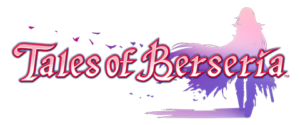
Available on: PlayStation 4, PC
Japan-only: PlayStation 3
Having been released in 2017, Tales of Berseria was an interesting evolution for the series. Berseria has a much darker tone woven throughout it, as its protagonist, Velvet, has the ability to transform into a daemon. Sharing the same world as Zestiria, but set a thousand years earlier, characters in Berseria struggle with the loss of family members, the zealotry presented by Abbey, and the enslavement of the Malakhim race. There’s also the Daemonblight, an infectious disease that causes humans to lose their humanity.
Although other Tales games have dealt with dark subjects, the tone of Berseria is a welcome change and sets it apart from them. Many of the characters in the game are not considered good guys by any stretch of the imagination, but they are people with convictions that they feel must be met. The cast is easily one of the game’s strengths, as Velvet’s transformation both figuratively and literally makes for a compelling story all its own. There’s also the mystery surrounding Velvet’s younger brother, Laphicet, which drives much of the plot forward. That’s topped off by the crazy sorceress Magilou, as well as Rokurou, a happy-go-lucky daemon samurai in debt to Velvet. There’s a lot to love about Berseria’s characters and its world-building.
Gameplay-wise, Berseria’s variation of the Linear Motion Battle System allows for free movement around the battle arena, with the ability to move the camera at will. Combat has the right amount of franticness to keep players on their toes. On top of usual Tales trappings, the newest addition to combat is the Soul Gauge, which depletes as characters use abilities and is this entry’s replacement for the old-school TP gauge. Enemies can drop souls to help replenish the gauge, and if a character has their gauge fully charged, they can use Break Soul, which allows for crazy combos.
In terms of start points, Tales of Berseria is an interesting option. The game is set in the same world as Zestiria, but the events of Berseria take place a thousand years before and knowledge of Zestiria is not at all needed for Berseria. While the dungeons are not the most interesting, the gameplay and story are solid. It’s largely considered a much better full-package experience than Zesteria. Given how often Berseria goes on sale, it’s an easy point to jump into the series for those wanting to start with a more modern experience.
Tales of Arise

Available on: PC, PlayStation 4, PlayStation 5, Xbox One, Xbox Series X|S
Without a doubt, Tales of Arise is one of the best in the series as it made a triumphant return following a five-year gap following Tales of Berseria. While other titles stake strong claims for certain individual elements, it’s hard to deny the accessibility and quality-of-life improvements that make Arise a joy to play and a great entry point for potential new fans.
The Tales series perhaps lost its place as the pinnacle of action JRPGs with so many new challengers, but Tales of Arise puts it firmly back up there. Arise’s battle system uses some mechanics from its predecessors, but it moves an appreciable distance to stand out on its own with its brand of fast-paced, colorful frenzy. Outside of battle, the intuitive fast travel and quest tracking are welcome additions and it feels like the series finally figured out how to link all of its areas together without an overworld. Also, it is a beautiful world to traverse, with the various regions in Dahna being among the most stunning and detailed areas in the series.
Tales of Arise is a noticeable jump up in quality for the series. The art direction, soundtrack, and combat system are all stellar. It’s the most accessible and easy to pick up game in the series. While the cast and story don’t reach the quite the same depth as certain other entries, Tales of Arise is a mighty fine game and one of the best starting points for those wanting to jump into the series.
Special Mentions from Michael Baker, RPGamer’s Man in Japan
With a series as broad and varied as Tales, it’s inevitable that there are things that have never seen foreign shores in their original formats. Some of them are even worth writing about. For the DS, that means four different game titles, which can be described variously as The Good, The Bad, The Froggy, and The Merely Adequate. And yes, I went and price-checked all of these in the local used game stores before I wrote this. Prices are indicative of continued popularity in most cases.
The Good: Tales of Hearts. This one has already been mentioned in regards to its R version for the Vita, but it bears repeating that while most of it is the same, the differences are significant. Tales of Hearts (DS) is a 2D Linear Motion Battle System game that prioritizes keeping enemies off-balance and in the air, and in general the game’s balance feels slightly different from the upgraded version. Not different in any positive or negative manner, just not the same. It’s up to the player to decide which they prefer. More notable is that Tales of Hearts (DS) came in two flavors of cutscene presentation, with CGI and anime versions sold separately. For what it is worth, the anime cutscene edition outsold the CGI edition by a fair amount, and the anime version is still the bigger seller on the secondhand market in Japan, but either one is readily available for less than 1000 yen.
The Bad: Tales of the Tempest. The title so ill-received that it was actually demoted from mothership (primary release) to escort (spin-off) after its publication. Is it that bad? Arguably yes. Its take on the Linear Motion Battle System is clunky, its user interface is difficult, its graphics are eye-gouging at times, and its plot ends right before the principal teenage protagonists have a chance to learn anything from their adventures. With the right development team giving it a proper remake, including a new battle system and license to extend the game’s narrative to its fullest, this could be a good game. No one has ever been tempted to give it that chance. It’s generally available for 300 yen or less in the used stores, and it’s not really worth that.
The Froggy: Sgt. Frog RPG: The Knight, the Warrior, and the Legendary Pirate. Obviously this is not a Tales game. It doesn’t even have the keywords in the title. That said, it was developed by Tales Studio, same as Tales of Hearts (but not Tempest or Innocence), and in every respect it plays like a game of this series. And it is good. It is unreasonably good. There is no reason a mange/anime spin-off title should be this much fun, and yet it is. If it actually had Tales in the title, then it would be a contender for best game of the series on a handheld. It also goes for 1500 or so yen, secondhand, which is more than Hearts can manage nowadays.
The Merely Adequate: Tales of Innocence. Fans may have noted this mothership title’s absence from the main list above. I hate to damn with faint praise, especially since the developers of this title, Alfa System, did so well with Tales of the World: Narikiri Dungeon 2 & 3 for the Game Boy Advance. However, it’s obvious that the developers had some issues with the move to the DS game architecture, and the overall product is lackluster in the DS version. The plot was interesting as could be, with the echoes of an age-old war in heaven reverberating through the reincarnated souls of its former combatants in the modern age, but the rest of the package just couldn’t match the potential. Thankfully, the R version of the game is available for the Vita, and that’s certainly more accessible to western audiences than the Japanese DS cartridge (even if it’s cheaper at 500 yen).
The Tales series has quite the history, and we hope you enjoyed our deep dive into this long-running franchise. Would you recommend a specific starting point? Join the conversation by dropping a comment below!

















































as a guy who beat all tales of games for me personally this guide look surprisingly suberb
tales of phantasia is a magnificent game what still stands really well, game is a masterpiece compare to to the final fantasy 1-5, ff games not even close to ff, all tales of games is really time consuming deal to beat, but tales of series deserve to be more popular and more smart and intelligent people discover this great jrpg for they own benefit
When anyone asks me where to start in the Tales series, because they know I’m such a fan of the series, I always ask, “How much can you put up with old, outdated systems?” Because there are some amazing games, if you can only get past systems/mechanics that were great for their time that may not feel like it now.
If they can I just rattle off my top 5:
Vesperia, Abyss, Symphonia, Graces, and Xillia 1 & 2 (as a combo), in descending order. Some of the best stories and characters the JRPG genre have ever brought to gaming!